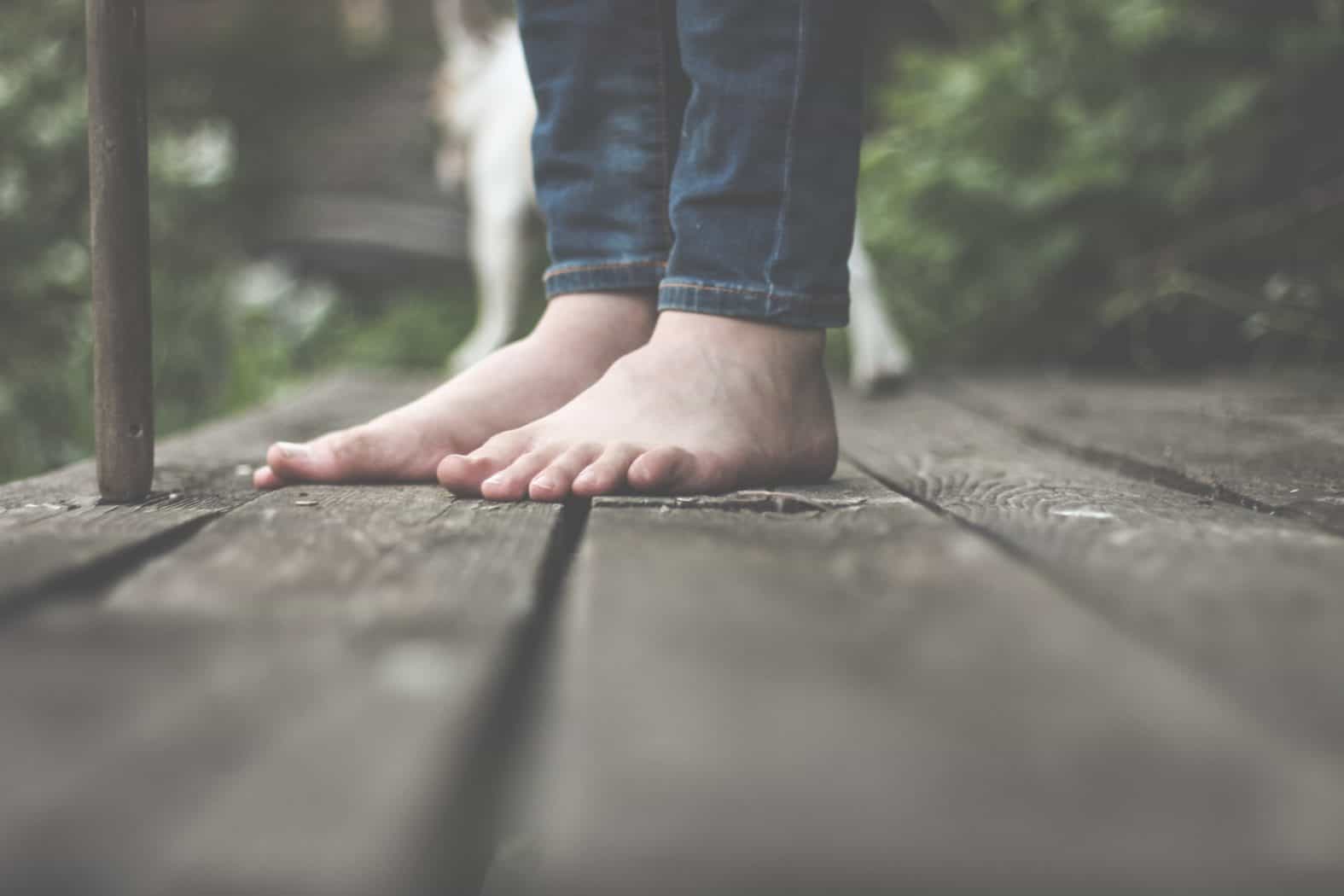
Feet, Don’t Fail Me Now
By Ann Constantino,
Photo by Brina Blum on Unsplash
The human foot is a structure that evolved to bear the weight of a mobile, usually intelligent biped via a wide variety of locomotive techniques. Our ancestors moved about on rough ground which necessitated an interface with the earth that could provide traction, strength, a degree of grip, and flexibility. Additionally, the foot is capable of remarkable dexterity, a fact that sadly comes to light usually in the absence of hands.
The foot is a tensegrity structure in which 26 bones, 100 joints, and a web of connective tissue create a springy shock absorption system for the weight of our entire body. (Tensegrity is a word coined by Buckminster Fuller to describe a structure whose integrity comes from tension.)
Enter civilization. Feet now require protection from artificially hard surfaces and warmth is a not a bad idea while we’re at it, and hey, with open sewage gutters running alongside the streets we civilized folk first walked, maybe a lick of sanitation might be a smart move as well. So the shoe was born, and sometimes for the better, sometimes for the worse, footwear has changed the whole human form’s relationship to the earth.
Flip flops, and many other types of shoes, challenge the foot in unnatural ways
Shoes that alter the natural shape of the foot for aesthetic reasons, shoes that “support” the elite athlete (ask Kevin Durant how supported his feet feel just now) as well as the weekend warrior, flip flops, and many other types of shoes all challenge the foot in unnatural ways and the results are a laundry list of foot ailments becoming more common all the time. Ironically, the more civilized we become and the more support we seek from footwear, the more issues we seem to have.
There are a few things you can do to regain sensitivity, as well as stretch and strengthen your feet in the hopes of regaining some natural function, and perhaps lessening your odds of developing painful issues.
The following are some remedies to try, but if you have had serious foot ailments, be sure to check in with your healthcare provider before walking them out.
- Go barefoot whenever it’s practical to do so. Especially on natural surfaces or floors that have some give to them such as wood. Unless you are a seasoned barefoot walker, stay off cement slab floors, hot coals, and lava deposits. Think sandy beaches and green grass.
- Toe stretch. Kneel and tuck your toes under, trying to get all ten piggies tucked to some extent. Push the toes into the floor, feeling the sole of the foot engage as you proceed to sit on your heels (or if that makes you wail, put your hands on the floor and push down and forward until you begin to transfer some weight into the feet that is tolerable). Stay for at least 30 seconds, and work up to two minutes or more. This strengthens the underside of the foot and restores some of its springiness.
- Calf raises. Stand with your forefoot on a stair or curb and most of the foot and heel not touching. Slowly lower your heels as low as you comfortably can and then slowly rise up onto tippy toes. Try 2-3 sets of ten and increase the challenge by doing one leg at a time. You can also vary the angle of your foot on the stair. This strengthens and stretches the sole as well as the achilles tendon and the calf muscles.
- Walk on different surfaces of your feet. In a safe environment, practice walking barefoot on the inner and outer edges of the foot, on your tippy toes, and on your heels. This simulates walking the uneven surfaces of the natural world, the way our feet evolved. Mix it up and rediscover how sensitive your feet are.
- Put some space between your toes. There are spacers made for when you paint your toenails that can work for this, and there are more expensive products that do an even better job and can be worn for as long as is convenient. You can also weave your fingers between your toes and wiggle them around. Shoes with narrow toe boxes squish our toes together and narrow the entire forefoot, robbing them of their functionality and sensitivity. If only wide toe boxes were sexy….
- Consider trying a “zero-drop” shoe. Zero-drop means the heel and forefoot strike the ground at the same exact level. There are minimalist versions which are barely padded and feel almost like being barefoot, and there are well-padded zero-drops that provide protection and shock absorption without raising the heel. Any kind of heel lift can wreak havoc all the way up the lower body and into the spine, shortening the back of the body and contributing to painful misalignment.
Let your feet breathe and feel and be the interpreter of what’s under you
Making the switch to different footwear should be done gradually. Better not to sign up for your first marathon after purchasing your first pair of minimalist sneaks.
Let your feet breathe and feel and be the interpreter of what’s under you. The results could be a more integrated relationship to gravity, befitting the species smart enough to have unraveled the laws of physics.
Ann Constantino, submitted on behalf of the SoHum Health’s Outreach department.
Related: Fitness, SoHum Health, Wellness